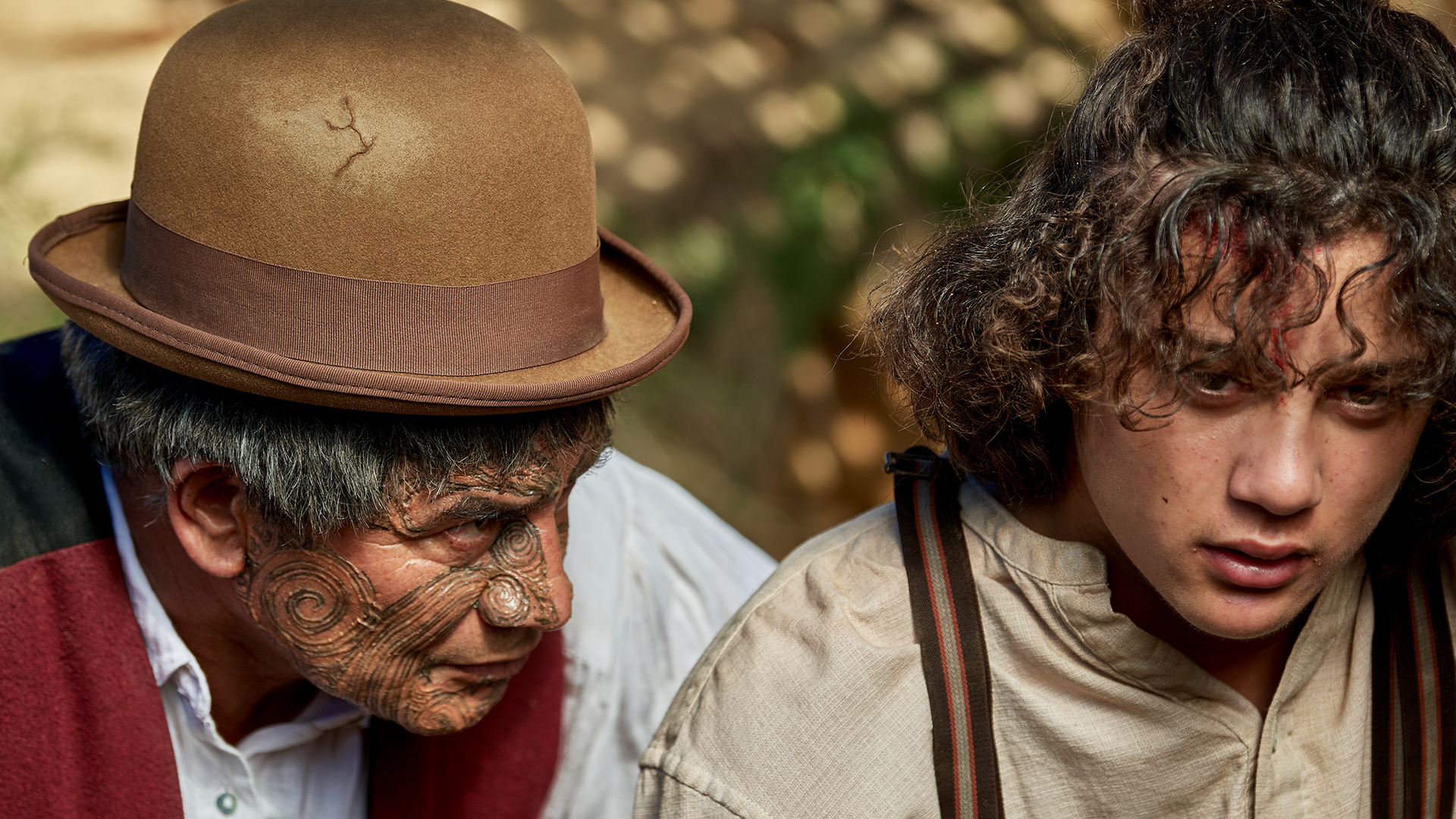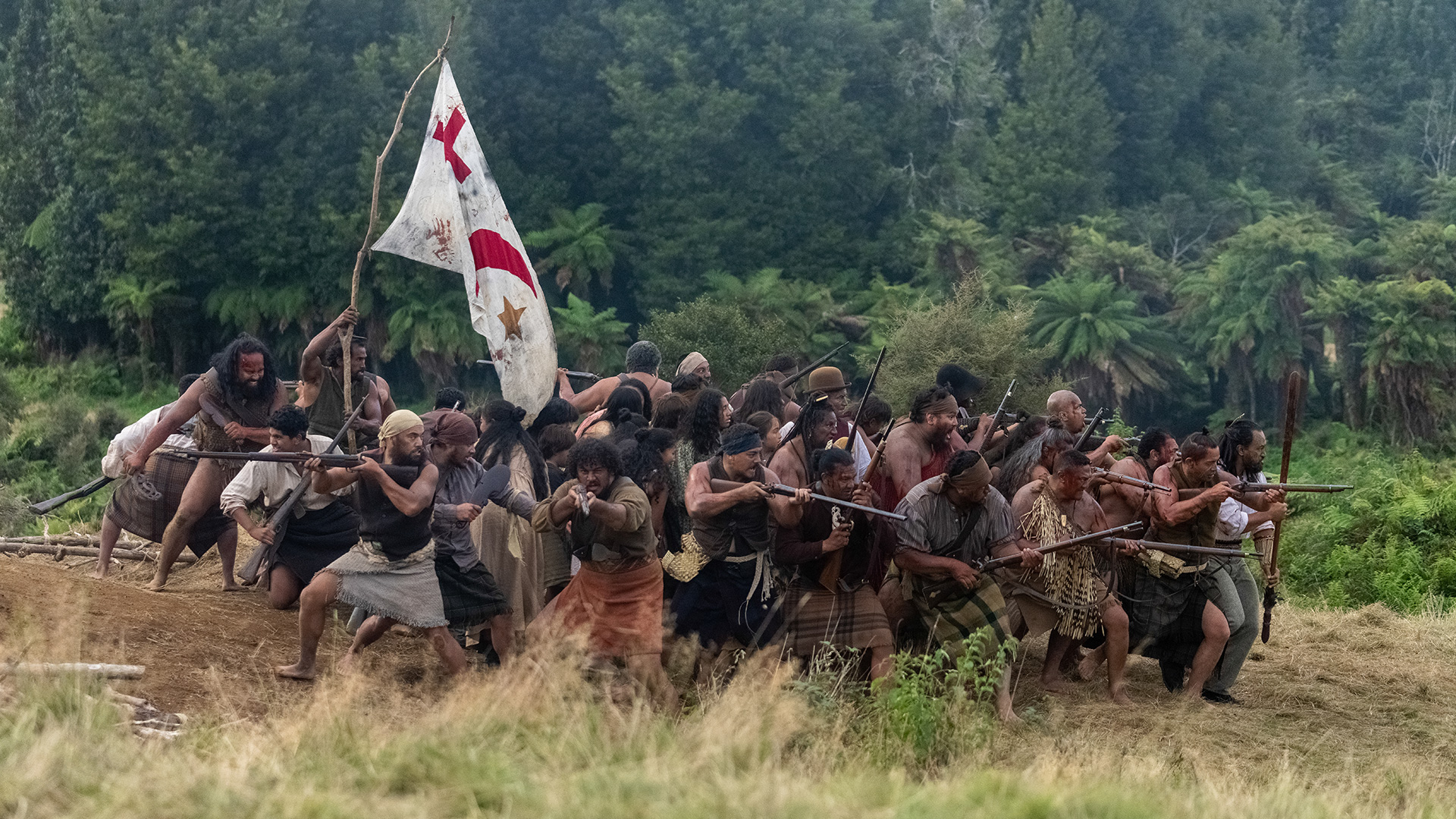Searing siege film Ka Whawhai Tonu deserves to be seen immediately

Aotearoa action film Ka Whawhai Tonu – Struggle Without End relays the siege of O-Rākau, one of the deadliest battles in the New Zealand Land Wars. Liam Maguren writes his feelings on why this deserves to be seen immediately.
I recently wrote about The Convert, Lee Tamahori’s flawed but affecting historical drama set during The Musket Wars, ending on the note: “we need to see pre-colonial Aotearoa on film that isn’t steeped in tragedy or warfare.” Releasing just three and a half months afterwards, it wouldn’t be fair to expect this of director Michael Jonathan’s narrative feature debut Ka Whawhai Tonu – Struggle Without End, which is necessarily steeped in the tragedy of the New Zealand Land Wars.
It also wouldn’t be fair, to either film, to ask: “Which one’s better?” That’s a question suited to a ranked list of Batman movies; not films relaying historical pains.
But comparisons will be inevitable, and for anyone unaware of Aotearoa New Zealand’s recent history, brief glimpses of the trailers for The Convert and Ka Whawhai Tonu may have them believe the same ground’s being covered. This simply isn’t true. If anything, Tamahori and Jonathan’s films act as complementary companions, bringing vastly different perspectives and productions to significantly distinct moments in time.
A faithful retelling of the siege of O-Rākau, Ka Whawhai Tonu drops the audience right into the eye of the storm with iwi leaders forming an alliance against the incoming British Imperial Army, who outnumber the resistance by thousands. The story revolves around teenagers Haki (Paku Fernandez), a half-caste boy soldier captured by the Māori resistance, and Kōpū (Hinerangi Harawira-Nichola), a Māori girl with a domineering mother and a reluctant ability to connect with a war god. Haki’s intended to be sacrificed, supposedly to grant the resistance good favour, but a growing friendship between him and Kōpū generates both hope and contention for their futures.
While The Convert anchored its story with Guy Pearce’s Pākehā protagonist, viewing the conflict from the outside in, Ka Whawhai Tonu lives through a Māori viewpoint, relaying this battle from the inside out. As such, the Māori characters are drawn with engrossing complexities—one of the many being the clash of faiths between opposing leaders Te Whenuanui (Te Wakaunua Te Kurapa), who’s committed to the words of his war god, and Rewi Maniapoto (Temuera Morrison), who’s converted to the “Pākehā” religion of Christianity. Naturally, te reo Māori dominates the script, which should see it as the prime contender for Aotearoa’s entry into the Oscar’s race for Best International Feature.

This narrative lock on the Māori fighters also lends to Ka Whawhai Tonu’s ability to deliver a great siege film. The genre lives and dies with the conflict resonating between its contained characters—think Sonny and Sal’s growing bond with the bank staff in Sidney Lumet’s Dog Day Afternoon, or the prickly relationship between warriors and villagers in Akira Kurosawa’s Seven Samurai. For Haki and Kōpū, their survival hinges on their words—he needs his captors to believe he’s an innocent bystander while she needs the adults to believe her role as the war god medium. And then there’s the invading British Imperial Army, purposely kept at a threatening distance and whose existence topples that pre-built tension into full-blown stress.
Like many great siege films, Ka Whawhai Tonu favours sluggish confrontations over grand set-pieces—an authentic kind of warfare where physical and mental exhaustion seeps from the characters and into the audience. Veteran NZ cinematographer Grant McKinnon seemingly links the movement of the camera to time itself: persistently tight frames visually fuel a relentless sense of urgency, the kind that proved so brutally effective in László Nemes’s Oscar-winner Son of Saul, while browsing wide shots linger along the landscape, as if considering the far-reaching consequences of the moment.
The biggest set piece comes at the most tragic point of the story, Jonathan bringing the full force of his production to rousingly display the desperation of the moment and the complete, catastrophic scale of the British invasion. The tension then simmers, though the situation is still desperate, leading to scenes that don’t quite convince as well as everything that’s come before it.

While the talented rangatahi among the cast deliver impressive performances on a whole, especially Harawira-Nichola and Fernandez, the script occasionally calls on some of them to reach a dramatic height they can’t quite grasp. There’s also a final showdown that’s choreographed and blocked in a way that feels a bit implausible, hinging on one person to behave out of character in a critical moment of survival. These minor setbacks are noticeable, but they don’t necessarily damage the overall experience, which proves immersive and affecting in equal measure.
Long after the film ended, there was one final point of difference between The Convert and Ka Whawhai Tonu that I couldn’t shake. A very light spoiler: Tamahori’s film ends on a note that’s uplifting in the moment, but considering what happens in NZ history northward of the 1830s, feels like a slice of hope soon to be dashed. Jonathan’s film has the opposite effect: the endpoint feels harsh, but in the context of generational survival, stirs an overwhelming sense of optimism for the current thriving of Aotearoa’s Indigenous people and culture.
Seeds were planted from this tragic event, and as the camera floats away with plentiful native fauna in view, ideas of time and growth bloom in a cinematic fashion that feels uniquely drawn from a Māori world view. A searing siege film with a soaring spirit to match, Ka Whawhai Tonu is an experience that deserves to be seen immediately.
















